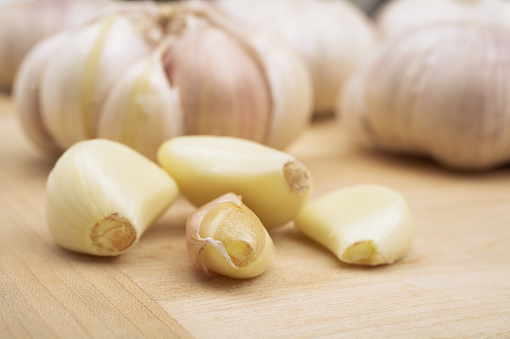Dr. Atta Ullah
The main goal of modern livestock enterprise is to improve nutrient utilization and growth rate while consuming the least amount of feed. Certain feed supplements can be used to increase the amenable extent. The addition of feed supplements to feed increases conversion capability and profits.
Antibiotics improve feed conversion efficiency:
It has also been reported that sub-doses of antibiotics (virginiamycin, neomycin, doxycycline) in animals improve feed conversion efficiency (FCE) and average daily gain (ADG). Despite the fact that sub-therapeutic antibiotic doses improved FCE and ADG in the feed diet, the European Union (EU) prohibited their use as a performance enhancer in animals due to bacterial resistance developed in both animals and humans. The researcher discovered natural alternative sources such as probiotics, organic acids, phytogenic, and garlic (Allium sativum), which is one of these phytogenic from the genus Allium and family Liliaceous. Many studies have shown that the active component of garlic has antimicrobial, hypocholesterolemia, antioxidant, and growth promoting properties in livestock and poultry. Garlic supplementation has been shown to stimulate growth in broiler chickens.
Garlic effects on health:
Garlic’s growth-promoting effect in animals could be attributed in part to its unique phytochemical content, which results in improved gut activities, immunity, and health status. The researcher discovered natural alternative sources such as probiotics, organic acids, phytogenic, and garlic (Allium sativum), which is one of these phytogenic from the genus Allium and family Liliaceae. Many studies have demonstrated that the active component of garlic has antimicrobial, hypocholesterolemic, antioxidant, and growth promoting properties in livestock and poultry. Garlic supplementation has been shown to stimulate growth in broiler chickens. Garlic’s growth-promoting effect in animals could be attributed in part to its unique phytochemical content, which leads to enhanced gastrointestinal activities, immunity, and overall health.
The adding of 2% garlic to the broiler diet for 2 weeks decreased hepatic cholesterol content, which may be due to the active ingredients of garlic. Garlic has been found to have a significant impact on laying performance and egg quality. Garlic powder lowers the cholesterol levels in birds’ blood and eggs. Garlic powder supplemented in layer fed diets at 5 and 10g/kg increased egg weight whereas declining egg yolk cholesterol and blood triglyceride levels in rats.
Garlic’s beneficial effects on different animals:
Garlic has also been shown to have a beneficial impact on rabbit blood chemistry. Ginger powder has been used to reduce rabbit blood cholesterol levels. According to a few studies, using turmeric and ginger powder alone has a negative effect on sperm volume, sperm mortality, sperm morphology characteristics of rabbit. Garlic’s role in grazing animals is that garlic supplementation sustained oxidation process in lamb meat. Garlic utilization induces methanogensis and maintains pH to reduce the incidence of acidosis, which reduces pathogen load in ruminants. Garlic supplementation at 5g /head/day in the cow diet enhanced the amount of conjugated linoleic acid (CLA) trans10, cis12 in milk without affecting the fatty acid of milk fat. Bull body weight was also increased by 2g of dried garlic.
1.5% garlic powder added to the goat diet increased eosinophils while having no effect on other blood parameters. The addition of garlic oil to the goat diet improved blood protein levels in lactating goats. Garlic may attain these financial advantages through one or more of the following modes of action. (1) rising the amount of beneficial microbes in the gut via selective elimination and antagonistic interactions. (2) The production and release of digestive enzymes alters the metabolic process in the gut. (3) direct nutritional influences, such as increased feed intake, digestion, and nutrient digestibility. Activation of the gut defense mechanism, increases glutathione concentration, and reduction of cellular damage caused by free radical attack.
Furthermore, as with other potential feed supplements, the utilization of garlic and its byproducts for commercial livestock and poultry feed has not been utilized. This may be due in part to the fact that their effect is dependent on a variety of factors such as quality products, inclusion rates, duration, species, and age of the animals. More research is needed to confirm the actual bioactive ingredients of garlic and their products that are responsible for the growth promoting effects and health benefits of garlic. This will open up economic space for garlic and their products in both human and animal nutrition.






